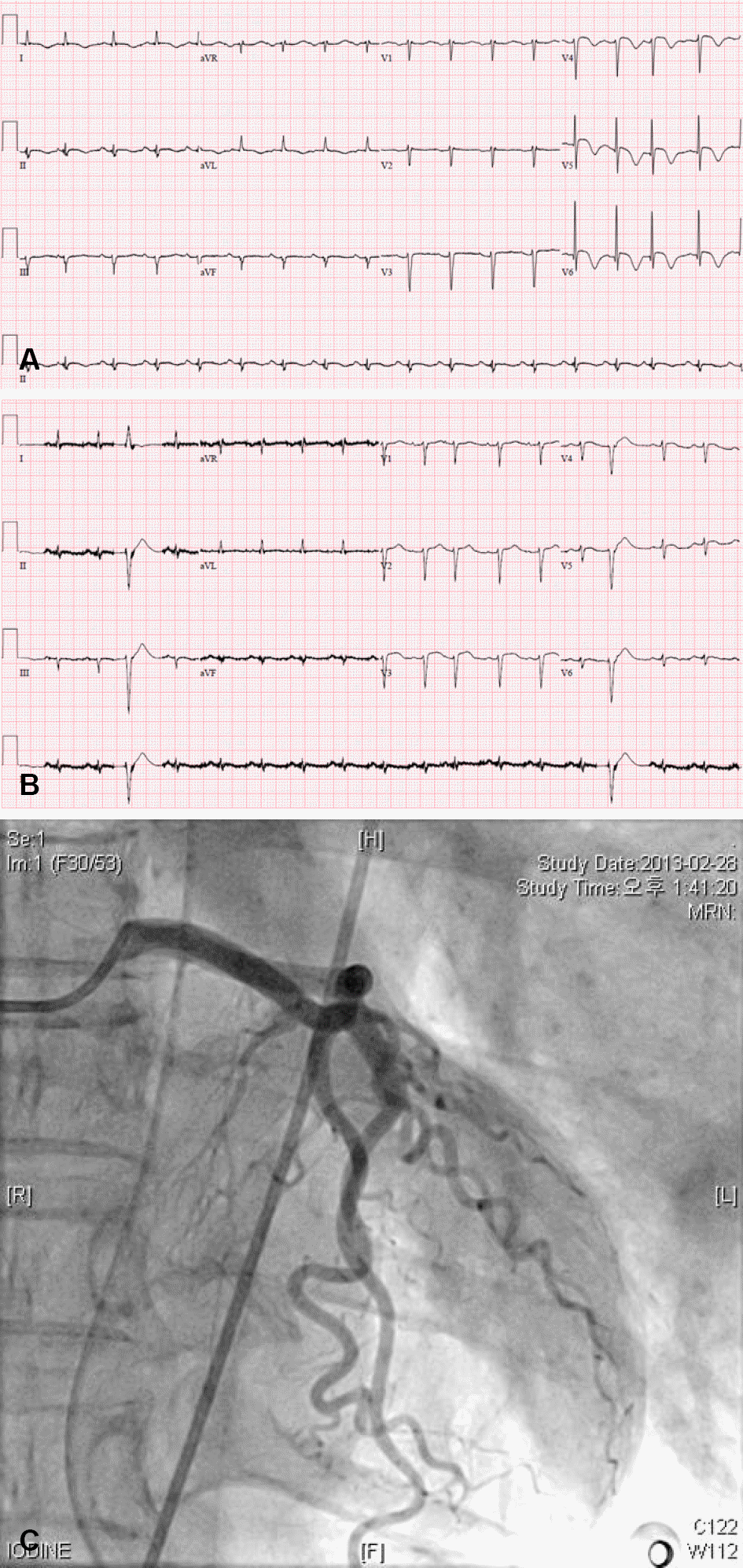Abstract
A 69-year-old woman presented with a progressive limb weakness. Both clinical and neurophysiological findings were consistent with diagnosis of Guillain-Barré syndrome (GBS). Two days after admission, the patient suffered from an acute coronary syndrome without stenosis at coronary arteriography. Echocardiography revealed left ventricular inferior wall and apical akinesia and decreased ejection fraction. A diagnosis of Takotsubo cardiomyopathy was then made. Left ventricular dysfunction and electrocardiography normalized within one month. Takotsubo cardiomyopathy can be developed as a complication of GBS. (Korean J Clin Neurophysiol 2015;17:73-75)
REFERENCES
1.Mukerji S., Aloka F., Farooq MU., Kassab MY., Abela GS. Cardiovascular complications of the Guillain-Barré syndrome. Am J Cardiol. 2009. 104:1452–1455.

3.Zochodne DW. Autonomic involvement in Guillain-Barré syndrome: a review. Muscle Nerve. 1994. 17:1145–1155.
4.Fugate JE., Wijdicks EF., Kumar G., Rabinstein AA. One thing leads to another: GBS complicated by PRES and Takotsubo cardiomyopathy. Neurocrit care. 2009. 11:395–397.

5.Iga K., Himura Y., Izumi C., Miyamoto T., Kijima K., Gen H, et al. Reversible left ventricular dysfunction associated with Guillain-Barré syndrome-an expression of catecholamine cardiotoxicity? Jpn Circ J. 1995. 59:236–240.
6.Martins RP., Barbarot N., Coquerel N., Baruteau AE., Kolev I., Vérin M. Takotsubo cardiomyopathy associated with Guillain-Barré syndrome: a differential diagnosis from dysautonomia not to be missed. J Neurol Sci. 2010. 291:100–102.

7.Quick S., Quick C., Schneider R., Sveric K., Katzke S., Strasser RH, et al. Guillain-Barré syndrome and catecholamine therapy. A potential risk for developing takotsubo cardiomyopathy? Int J Cardiol. 2013. 165:43–44.
8.Porto I., Della Bona R., Leo A., Proietti R., Pieroni M., Caltagirone C, et al. Stress cardiomyopathy (Tako-tsubo) triggered by nervous system disease: a systemic review of the reported cases. Int J Cardiol. 2013. 167:2441–2448.
9.Tsuchihashi K., Ueshima K., Uchida T., Oh-mura N., Kimura K., Owa M, et al. Transient left ventricular apical ballooning without coronary artery stenosis: a novel heart syndrome mimicking acute myocardial infarction. Angina Pectoris-Myocardial Infarction Investigations in Japan. J Am Coll Cardiol. 2001. 38:11–18.




 PDF
PDF ePub
ePub Citation
Citation Print
Print



 XML Download
XML Download